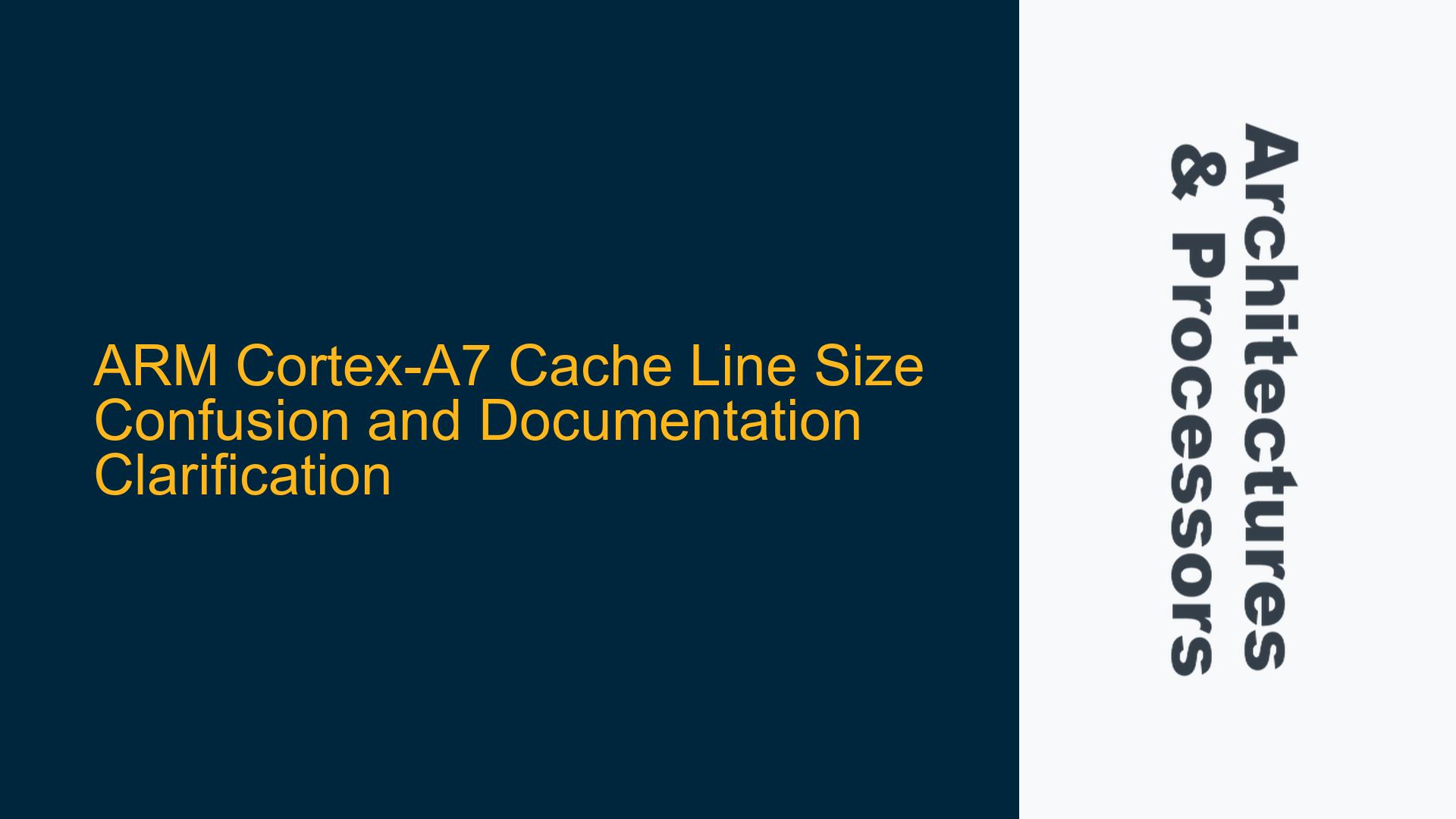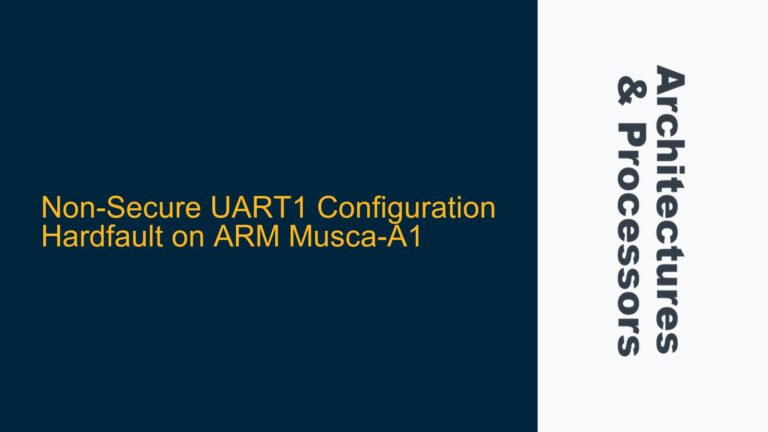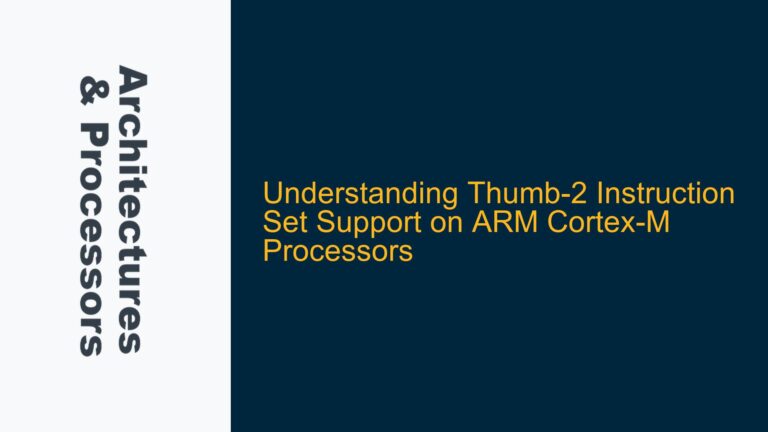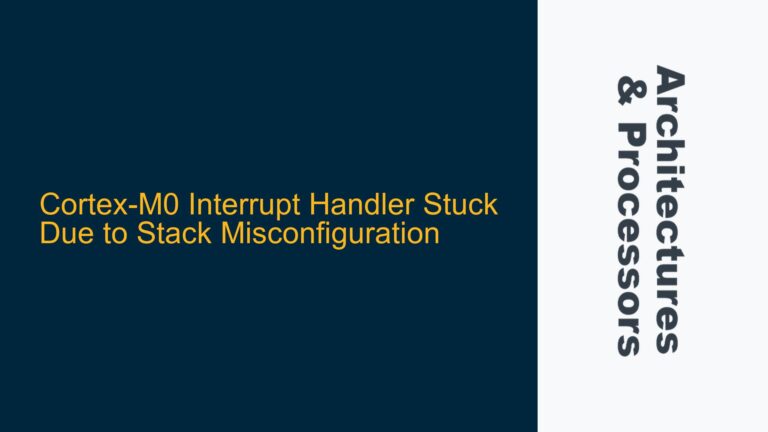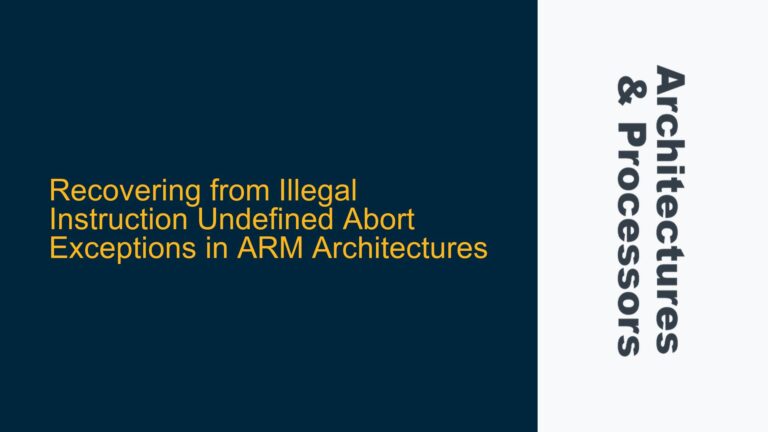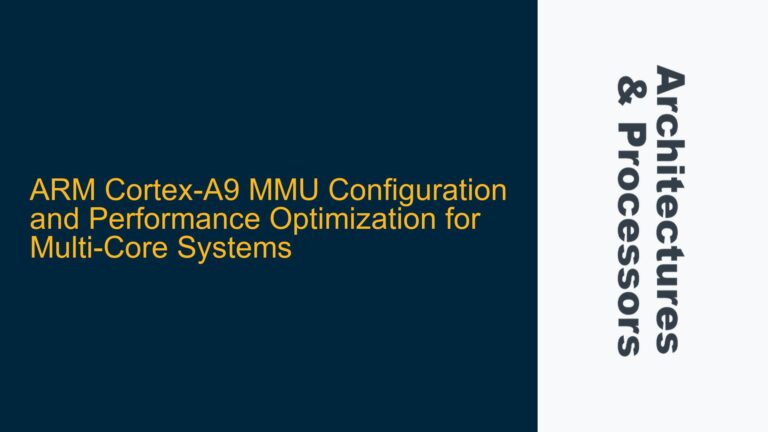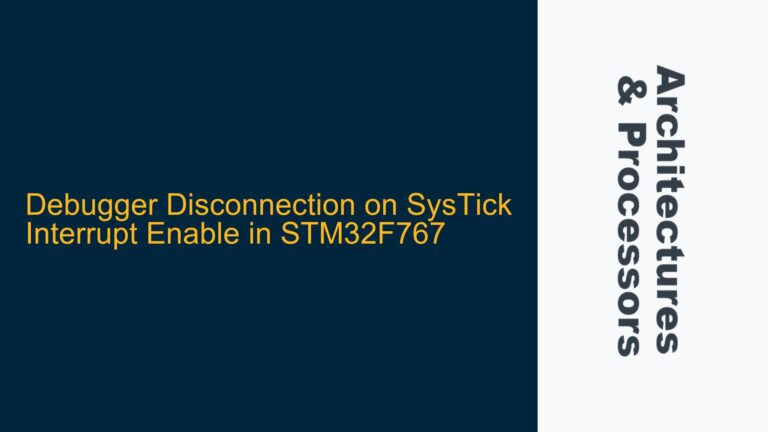ARM Cortex-A7 Cache Line Size Discrepancy in ARMv7-A Programmer’s Guide
The ARM Cortex-A7 processor, a member of the ARMv7-A architecture family, is widely used in embedded systems for its balance of performance and power efficiency. A critical aspect of its performance is the cache architecture, which directly impacts memory access latency and overall system throughput. However, a discrepancy in the ARM® Cortex-A Series Programmer’s Guide for ARMv7-A regarding the cache line size of the Cortex-A7 has led to confusion among developers. Specifically, the guide states that the Cortex-A7 cache line size is 8 words (64 bytes), which appears to conflict with the definition of a word in ARM architectures, where 1 word typically equals 4 bytes. This inconsistency raises questions about the accuracy of the documentation and the actual cache line size implemented in the Cortex-A7.
To understand the issue, it is essential to delve into the cache architecture of the Cortex-A7. The processor features separate Level 1 (L1) instruction and data caches, each with distinct characteristics. The L1 instruction cache is designed to store instructions fetched from memory, while the L1 data cache holds data accessed by the processor. Both caches are critical for reducing memory access latency and improving execution efficiency. The cache line size, which defines the smallest unit of data that can be transferred between the cache and main memory, is a key parameter that influences cache performance.
The ARMv7-A Programmer’s Guide provides a table (Table 8-1) summarizing the cache features of Cortex-A series processors, including the Cortex-A7. According to this table, the Cortex-A7 has a cache line size of 8 words (64 bytes). However, this raises a red flag because, in ARM architectures, a word is conventionally defined as 4 bytes. If the cache line size is indeed 8 words, this would imply a cache line size of 32 bytes, not 64 bytes. This inconsistency suggests either a typographical error in the documentation or a misunderstanding of the cache line size definition.
Further complicating the matter is the absence of cache line size information for the Cortex-A12 in the same table. This omission adds to the confusion, as developers working with the Cortex-A12 are left without clear guidance on the cache line size, potentially leading to suboptimal cache management strategies.
To resolve this confusion, it is necessary to consult the Technical Reference Manual (TRM) for the Cortex-A7, which provides a more detailed and authoritative description of the processor’s cache architecture. The TRM clarifies that the L1 instruction cache has a cache line length of 32 bytes, while the L1 data cache has a cache line length of 64 bytes. This aligns with the conventional definition of a word in ARM architectures, where 1 word equals 4 bytes. Therefore, the cache line size of 8 words (32 bytes) for the instruction cache and 16 words (64 bytes) for the data cache is consistent with the TRM.
The discrepancy in the ARMv7-A Programmer’s Guide appears to be a typographical error, likely due to the age of the document. This highlights the importance of cross-referencing multiple sources of documentation when working with complex architectures like the ARM Cortex-A7. Developers should always consult the latest TRM and other official resources to ensure accurate understanding and implementation of architectural features.
Memory Architecture Definitions and Cache Line Size Misinterpretation
The confusion surrounding the cache line size of the ARM Cortex-A7 stems from a misinterpretation of the memory architecture definitions provided in the ARMv7-A Programmer’s Guide. In ARM architectures, the term "word" has a specific definition: 1 word equals 4 bytes. This definition is consistent across various ARM processors and is a fundamental aspect of the architecture’s design. However, the guide’s table (Table 8-1) lists the Cortex-A7 cache line size as 8 words (64 bytes), which contradicts the conventional definition of a word.
This inconsistency can be attributed to several factors. First, the ARMv7-A Programmer’s Guide is a general document that covers a wide range of Cortex-A series processors, each with its own unique cache architecture. As such, it is possible that the table contains errors or outdated information, especially given the age of the document. Second, the guide may have used a different definition of "word" in the context of cache line size, leading to confusion among developers.
To clarify, the cache line size is a critical parameter that defines the smallest unit of data that can be transferred between the cache and main memory. A larger cache line size can improve performance by reducing the number of cache misses, but it also increases the amount of data transferred during each cache operation, which can lead to higher memory bandwidth usage. Therefore, understanding the correct cache line size is essential for optimizing cache performance and ensuring efficient memory access.
The Technical Reference Manual (TRM) for the Cortex-A7 provides a more accurate and detailed description of the cache architecture. According to the TRM, the L1 instruction cache has a cache line length of 32 bytes, which corresponds to 8 words (8 x 4 bytes). The L1 data cache, on the other hand, has a cache line length of 64 bytes, corresponding to 16 words (16 x 4 bytes). This aligns with the conventional definition of a word in ARM architectures and resolves the confusion caused by the ARMv7-A Programmer’s Guide.
The absence of cache line size information for the Cortex-A12 in the ARMv7-A Programmer’s Guide further complicates the matter. Developers working with the Cortex-A12 must rely on the TRM for accurate information on the cache architecture. This highlights the importance of consulting multiple sources of documentation and staying updated with the latest revisions to ensure accurate understanding and implementation of architectural features.
Resolving Cache Line Size Confusion with Technical Reference Manual Cross-Referencing
To resolve the confusion surrounding the cache line size of the ARM Cortex-A7, developers should cross-reference the ARMv7-A Programmer’s Guide with the Technical Reference Manual (TRM) for the Cortex-A7. The TRM provides a more detailed and authoritative description of the processor’s cache architecture, including the cache line size for both the L1 instruction and data caches.
According to the TRM, the L1 instruction cache has a cache line length of 32 bytes, which corresponds to 8 words (8 x 4 bytes). This aligns with the conventional definition of a word in ARM architectures and resolves the discrepancy in the ARMv7-A Programmer’s Guide. The L1 data cache, on the other hand, has a cache line length of 64 bytes, corresponding to 16 words (16 x 4 bytes). This information is critical for developers who need to optimize cache performance and ensure efficient memory access.
In addition to consulting the TRM, developers should also consider the following steps to ensure accurate understanding and implementation of the cache architecture:
-
Verify Documentation Versions: Ensure that you are using the latest version of the ARMv7-A Programmer’s Guide and the Cortex-A7 TRM. Documentation is periodically updated to correct errors and provide additional information, so using the latest version is essential.
-
Cross-Reference Multiple Sources: In addition to the ARMv7-A Programmer’s Guide and the Cortex-A7 TRM, consult other official ARM resources, such as application notes, white papers, and community forums. This can provide additional insights and help resolve any remaining ambiguities.
-
Understand Cache Management Instructions: Familiarize yourself with the cache management instructions provided by the ARM architecture, such as Data Synchronization Barriers (DSB), Instruction Synchronization Barriers (ISB), and cache maintenance operations. These instructions are critical for ensuring cache coherency and optimizing cache performance.
-
Implement Cache-Aware Algorithms: When developing software for the Cortex-A7, consider the cache line size when designing algorithms and data structures. For example, aligning data structures to cache line boundaries can reduce cache misses and improve performance.
-
Use Profiling Tools: Utilize profiling tools to analyze cache performance and identify potential bottlenecks. Tools such as ARM DS-5 Development Studio and Streamline Performance Analyzer can provide valuable insights into cache behavior and help optimize performance.
By following these steps, developers can resolve the confusion surrounding the cache line size of the ARM Cortex-A7 and ensure accurate implementation of the cache architecture. This, in turn, will lead to improved performance and efficiency in embedded systems utilizing the Cortex-A7 processor.
In conclusion, the discrepancy in the ARMv7-A Programmer’s Guide regarding the cache line size of the Cortex-A7 is likely a typographical error. By cross-referencing the guide with the Cortex-A7 TRM and consulting additional resources, developers can gain a clear understanding of the cache architecture and optimize their software accordingly. This approach not only resolves the immediate
